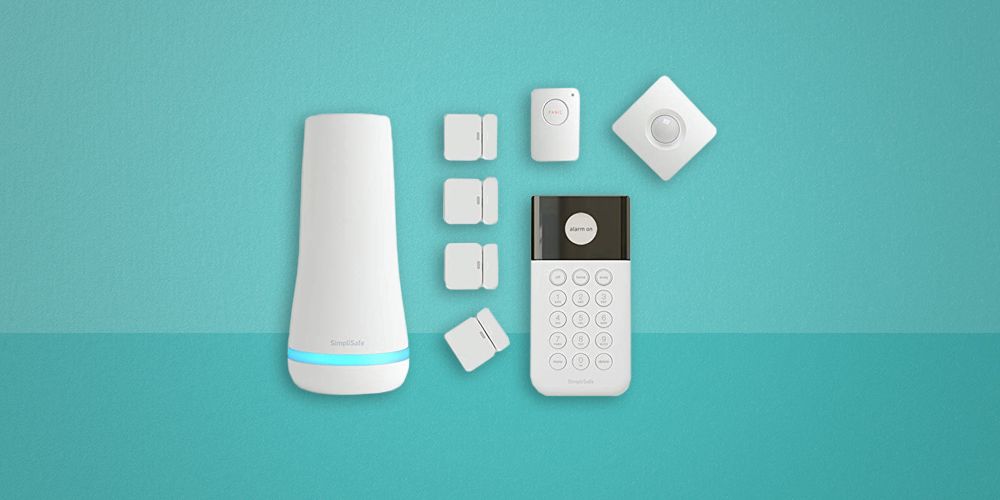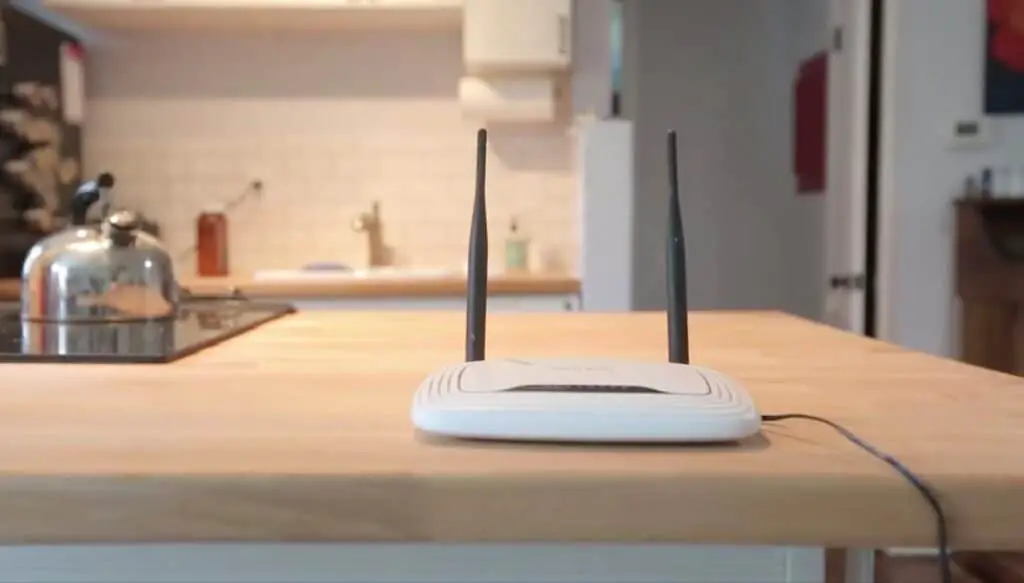Introduction
Will Simplisafe Work Without Wifi: In an increasingly connected world, home security systems have also evolved to incorporate smart technology. SimpliSafe is a popular choice in this regard, offering a range of wireless security solutions. One common question among potential users is whether SimpliSafe will work without WiFi. This article aims to provide a comprehensive understanding of SimpliSafe’s functionality in the absence of WiFi.
SimpliSafe is a DIY home security system known for its easy installation and wireless components. It includes various devices such as motion sensors, entry sensors, security cameras, and a base station. These devices communicate with each other and with the central monitoring station using wireless technologies like WiFi, cellular connection, and proprietary RF (radio frequency) communication.
With a WiFi connection, SimpliSafe camera users can remotely monitor their homes using the SimpliSafe mobile app. This app provides real-time alerts, live camera feeds, and the ability to arm or disarm the system from anywhere with an internet connection.

Will SimpliSafe work without Wi-Fi?
No, SimpliSafe doesn’t require Wi-Fi to work, although we recommend it. SimpliSafe’s base station comes with a cellular connection that lets it talk to all your sensors and stay in touch with SimpliSafe’s monitoring center. You can still connect your SimpliSafe base station to your Wi-Fi network.
Sensor Communication: The different parts of SimpliSafe can talk to each other using a special wireless system. These parts include door/window sensors, motion detectors, and glass break sensors. Even if Wi-Fi isn’t working, these monitors can still set off the alarm. The base station talks to the sensors directly and sounds a warning when a breach is found.
Local Siren: The base station features a built-in siren that emits a loud sound when a sensor is triggered. This local siren provides a deterrent effect to intruders, even if the system isn’t connected to Wi-Fi.
Keypad Operation: The SimpliSafe keypad allows users to arm and disarm the system with a personalized PIN code. This functionality remains fully operational without Wi-Fi, ensuring that users can manually control their security system.
Remote Monitoring and Control: SimpliSafe offers remote access and control through a mobile app, allowing users to monitor their home security status and make changes remotely. Without a Wi-Fi connection, you won’t have access to these features. This means you can’t arm or disarm the system remotely, receive alerts, or check the system status via the app.
What cellular service does SimpliSafe use?
T-Mobile for Base Stations.
Backup Communication: Cellular connection is an extra way for the SimpliSafe system to talk to people. Communication in the system is mostly done through Wi-Fi, but if the Wi-Fi network goes down because of an outage or interference, the system automatically changes to cellular connectivity. This makes sure that your security system can still join and work even if the internet is down.
Emergency Alerts: In case of a security breach or alarm trigger, the SimpliSafe system uses cellular connectivity to send emergency alerts to both the homeowner and the monitoring center. This real-time communication ensures that appropriate action can be taken promptly to address the situation.
Remote Control: Cellular connectivity also enables remote control of the SimpliSafe system through the mobile app. Users can arm or disarm the system, receive alerts, and monitor their home security status from their smartphones, regardless of their physical location.
What security system does not require Wi-Fi?
There are a few types of wireless security cameras that work without internet, such as closed-circuit TV (CCTV) cameras, analog cameras, and IP security cameras.
Cellular Communication: Instead of relying on Wi-Fi, cellular security systems use cellular signals to transmit data. They come equipped with a cellular module that connects to the nearest cell tower, ensuring reliable communication even if your internet connection goes down.
Backup Communication: Cellular-based systems offer a significant advantage as they provide a backup communication channel. In the event of a power outage or Wi-Fi failure, the system can switch to cellular communication, ensuring continuous protection.
Remote Monitoring: Just like Wi-Fi-enabled systems, cellular-based systems offer remote monitoring and control through mobile apps. Users can receive real-time alerts, arm or disarm the system, and monitor their property from their smartphones, regardless of their location.
Can you have security without WiFi?
Can Security Cameras Work Without Wired Internet? Yes, it is possible to use your security cameras without internet. It’s a good option if you have poor service or lack high-speed access. Many of the cameras that don’t use the internet connect through a closed system, such as a CCTV or mobile setup.
Communication Reliability: Cellular security systems use cellular signals to transmit data, ensuring a reliable connection even if Wi-Fi is unavailable or unstable.
Backup Communication: These systems offer a significant advantage by providing a backup communication channel. If your Wi-Fi goes down, the system can switch to cellular communication, ensuring continuous protection.
Remote Monitoring: Just like Wi-Fi-enabled systems, cellular-based systems offer remote monitoring and control through mobile apps. You can receive real-time alerts, arm or disarm the system, and monitor your property from your smartphone.
Phone Line Connection: Landline-based systems use your home’s phone line to transmit signals to the monitoring center. When a sensor is triggered, the system dials the monitoring center’s phone number to alert them.
Basic Security Features: These systems provide basic security functions, but they might lack some of the advanced capabilities of Wi-Fi-connected systems. Remote access and control could be limited.
Can you have a security system without internet?
Not all security cameras require the internet, but without it, you miss out on remote control, notifications, and other features of smart cameras. While these days, most security cameras are connected to the internet, there are a number of wireless options that don’t require the net to function.
You don’t have to count on Wi-Fi to have effective security measures. There are cellular and landline-based security systems, as well as old-fashioned local alarms, that can help you get peace of mind, reliability, and backup contact. By learning about the pros and cons of these options, homeowners can make smart choices that fit their individual security needs and situations.
These systems use traditional telephone lines to transmit signals to the monitoring center. When a sensor is triggered, the system dials the monitoring center’s phone number, notifying them of the breach.
It is possible to keep up a good protection system without the internet. Along with standard local alarms, cellular- and landline-based security systems offer reliable options that focus on dependability, backup communication, and peace of mind. When homeowners know the pros and cons of these options, they can make smart choices based on their own protection needs and the connectivity options in their area.
What happens if WIFI is not secure?
It usually involves a wireless router that sends a signal through the air. You use that signal to connect to the internet. But unless your network is password protected, any device within range — whether yours, your guest’s, or a stranger’s — can pull the signal from the air and use your internet connection.
If your Wi-Fi is not secure, it becomes vulnerable to unauthorized access. Hackers and cybercriminals can exploit weak or nonexistent security measures to gain access to your network. Once inside, they may steal sensitive information, monitor your online activities, or even launch attacks on other devices connected to the same network.
Data breaches can happen on Wi-Fi networks that aren’t safe. Bad people can steal your private data, like personal information, financial information, or login credentials, if you send it over a Wi-Fi network that isn’t secure. Now, this data can be stolen and used for scams, identity theft, or other online crimes.
Cybercriminals can use unsecured Wi-Fi networks as a platform to distribute malware. When users connect to an insecure network, their devices may become infected with malicious software, which can lead to a variety of issues, such as data loss, system slowdowns, and unauthorized access to sensitive files.
What is the safest security mode for WIFI?
As the most up-to-date wireless encryption protocol, WPA3 is the most secure choice. Some wireless APs do not support WPA3, however. In that case, the next best option is WPA2, which is widely deployed in the enterprise space today.
WEP was one of the earliest security protocols for Wi-Fi networks, but it is now considered highly vulnerable and outdated. Hackers can easily crack WEP encryption, making it a poor choice for securing your network.
WPA offers improved security over WEP. However, the original WPA protocol also had vulnerabilities that could be exploited by hackers. It’s recommended to use its successor, WPA2, which is much more secure.
WPA2 is currently the most widely used and recommended security mode for Wi-Fi networks. It uses stronger encryption algorithms and protocols, making it significantly more secure than its predecessors. Most modern routers and devices support WPA2.
The newest and best Wi-Fi protection protocol is WPA3. It adds better security features, like stronger encryption for public Wi-Fi networks and defenses against brute-force attacks. WPA3 is slowly becoming more common, but not all devices and routers accept it yet.
Do security systems need to be wired?
There’s no one-size-fits-all answer to this question, but here’s the gist: Wired security systems have more reliable signals, whereas wireless systems provide a more streamlined installation and can be used in places where wired systems can’t.
Regularly Update Firmware: Keep your router’s firmware up to date to ensure that any security vulnerabilities are patched.
Strong Passwords: Use a strong and unique password for your Wi-Fi network, including a mix of upper and lower-case letters, numbers, and special characters.
Network Name (SSID): Avoid using default or easily guessable SSIDs. Choose a unique name that doesn’t disclose personal information.
Disable WPS: Wi-Fi Protected Setup (WPS) can be a security risk, so it’s advisable to disable it on your router.

Conclusion
The advent of smart home technology has revolutionized the way we secure our living spaces, and the SimpliSafe security system is a prime example of this innovation. Offering a comprehensive array of features that leverage Wi-Fi connectivity, users often wonder if the system can function effectively without a Wi-Fi connection. In this article, we’ll delve into the functionality and limitations of SimpliSafe when operating without Wi-Fi.
Even without a Wi-Fi connection, the SimpliSafe system’s core function—detecting unauthorized access and triggering alarms—remains operational. The sensors, such as door/window contacts and motion detectors, communicate directly with the base station via a still work proprietary wireless protocol. When a sensor is triggered, the base station will sound its built-in siren, alerting occupants and potentially deterring intruders.
SimpliSafe offers professional monitoring services that connect your security system to a monitoring center. This center can dispatch emergency services in case of an alarm. However, this feature relies on an active Wi-Fi connection to communicate with the monitoring center. Without Wi-Fi, this aspect of the system won’t be functional.

